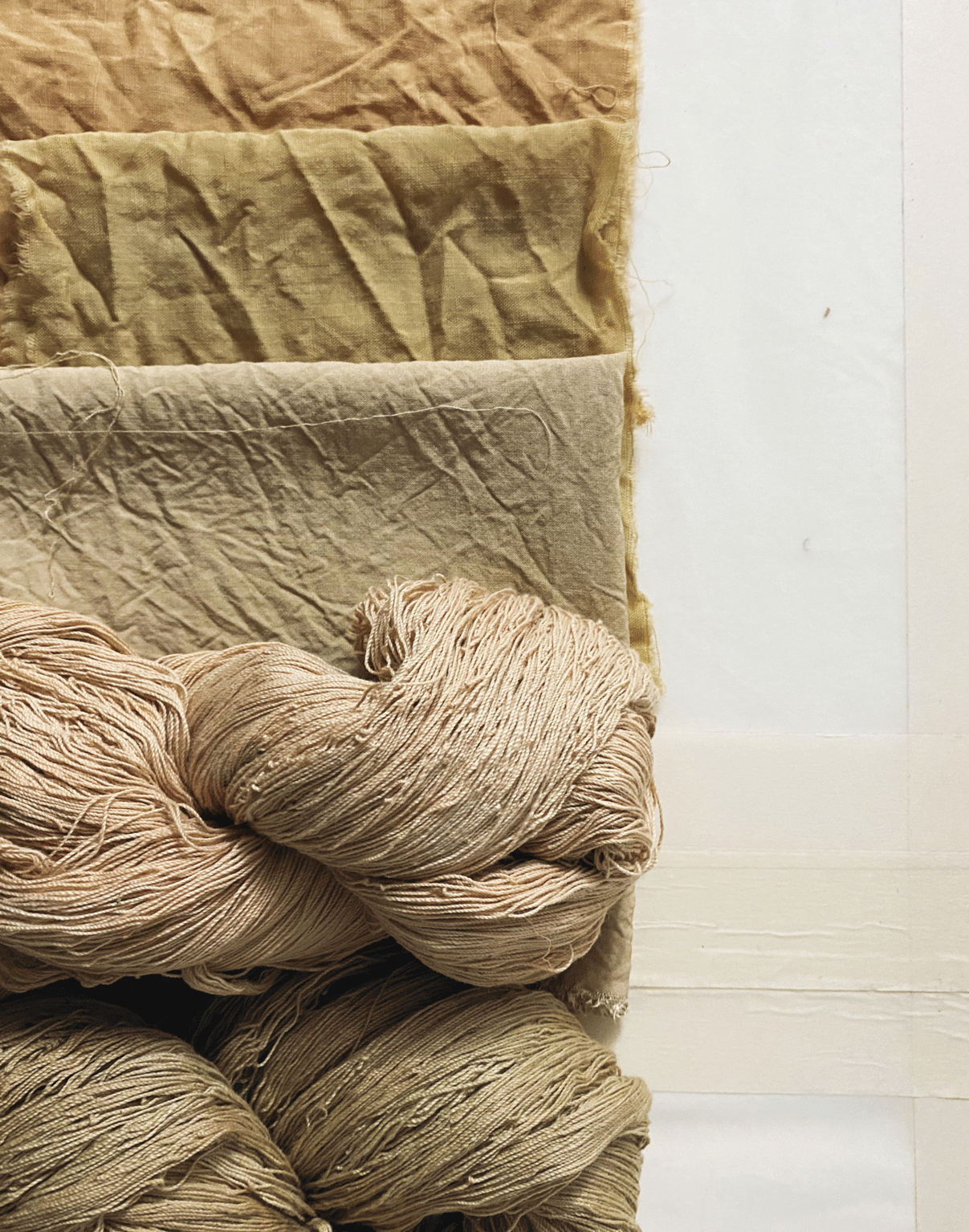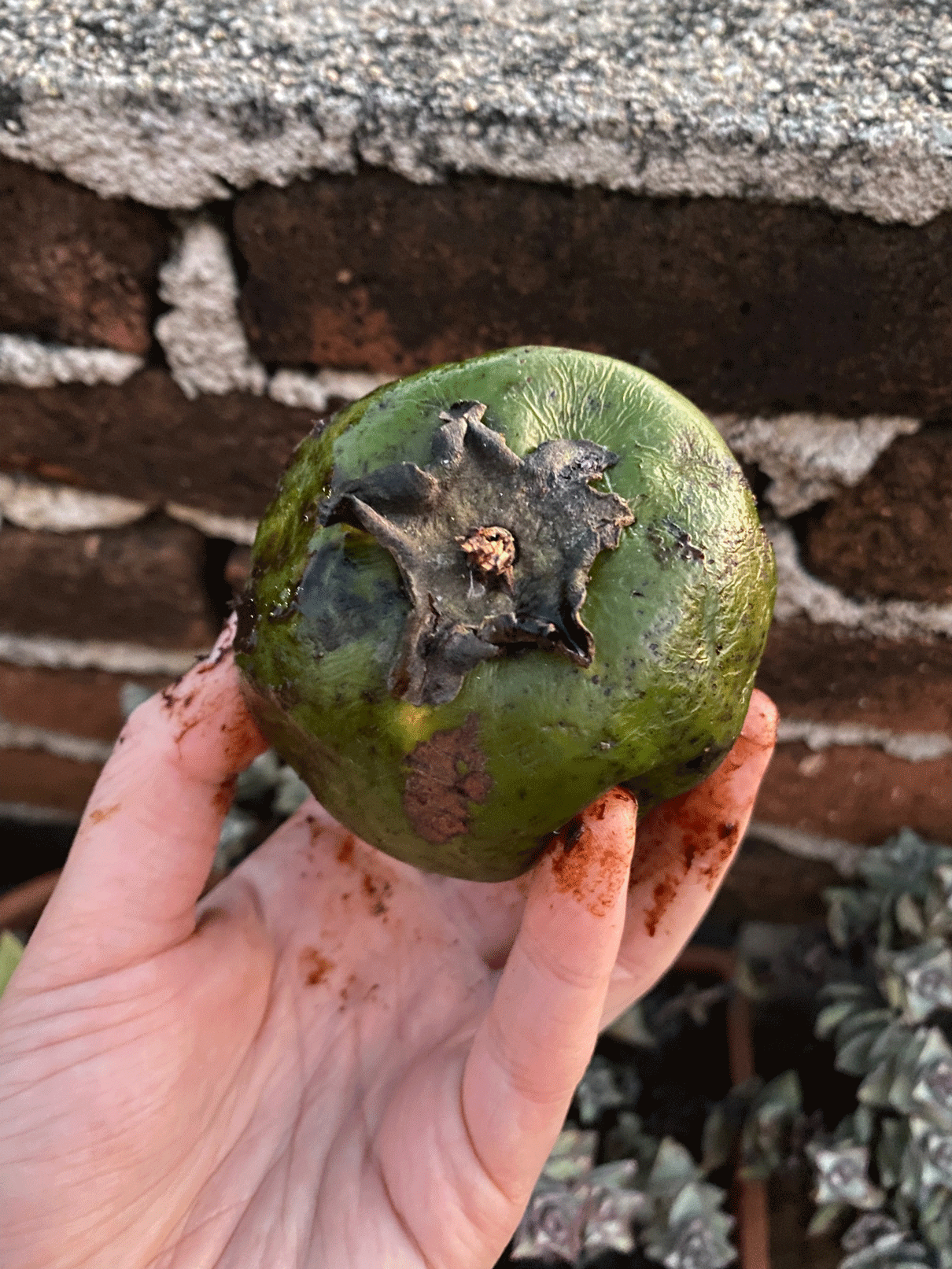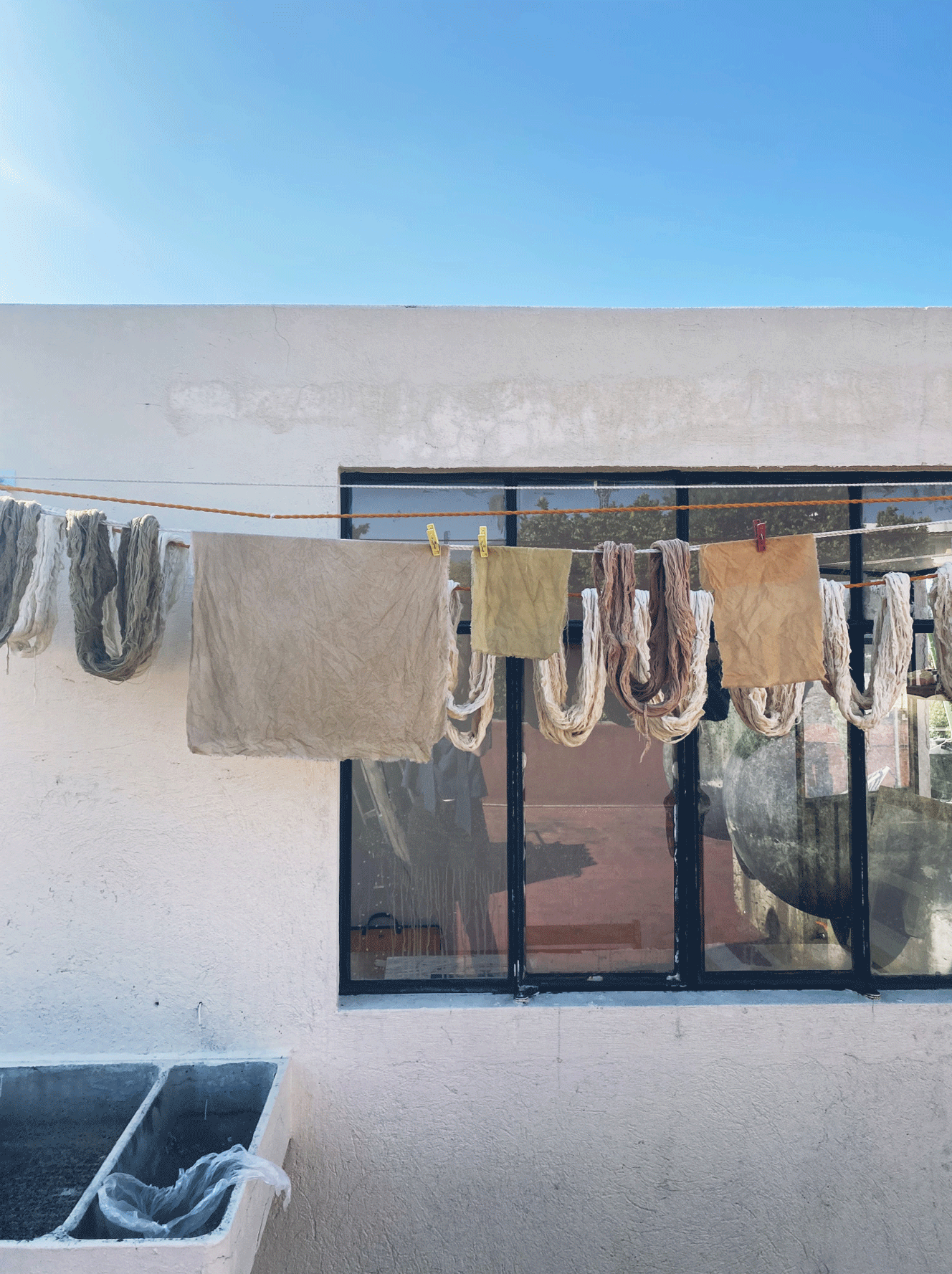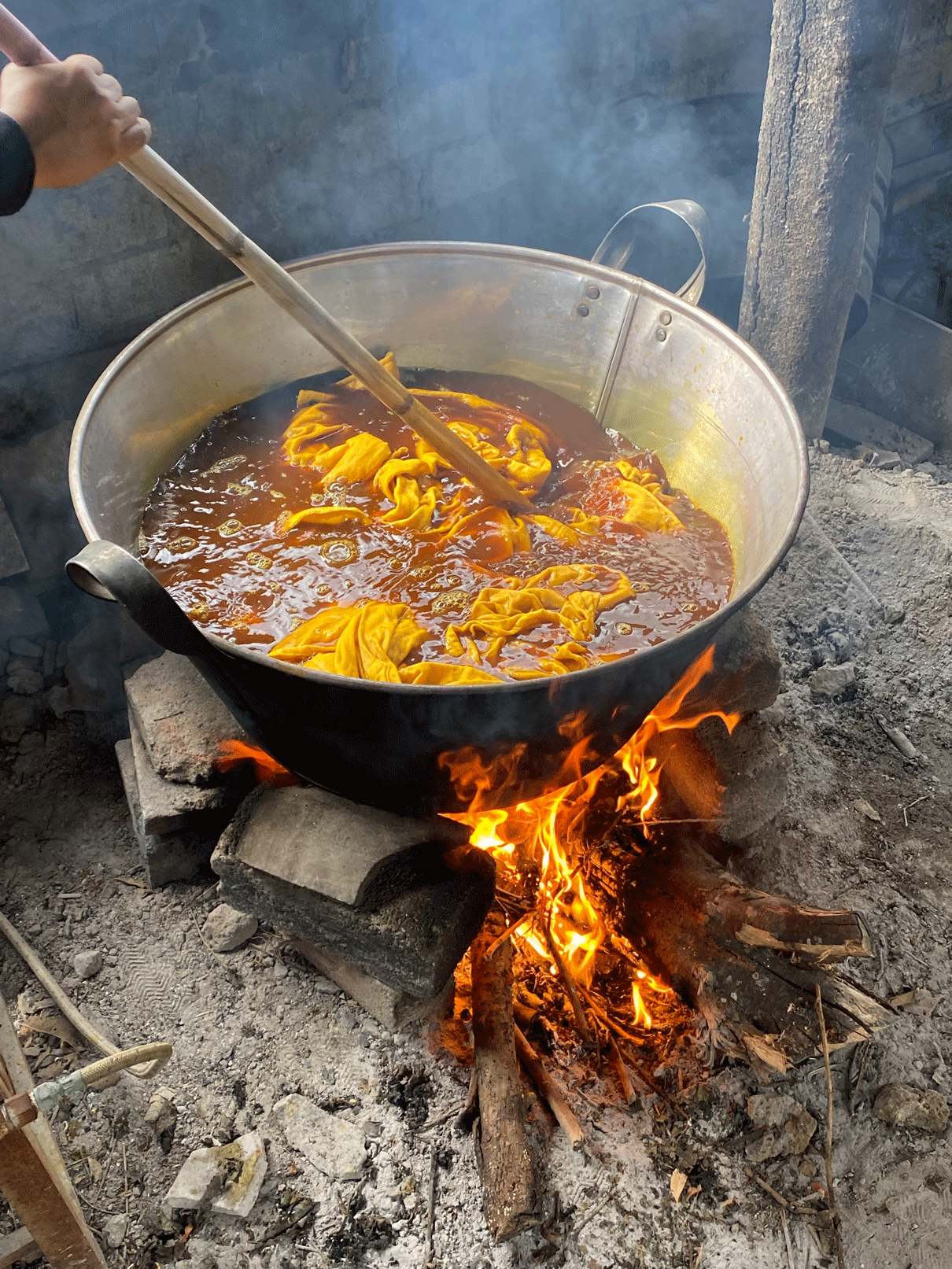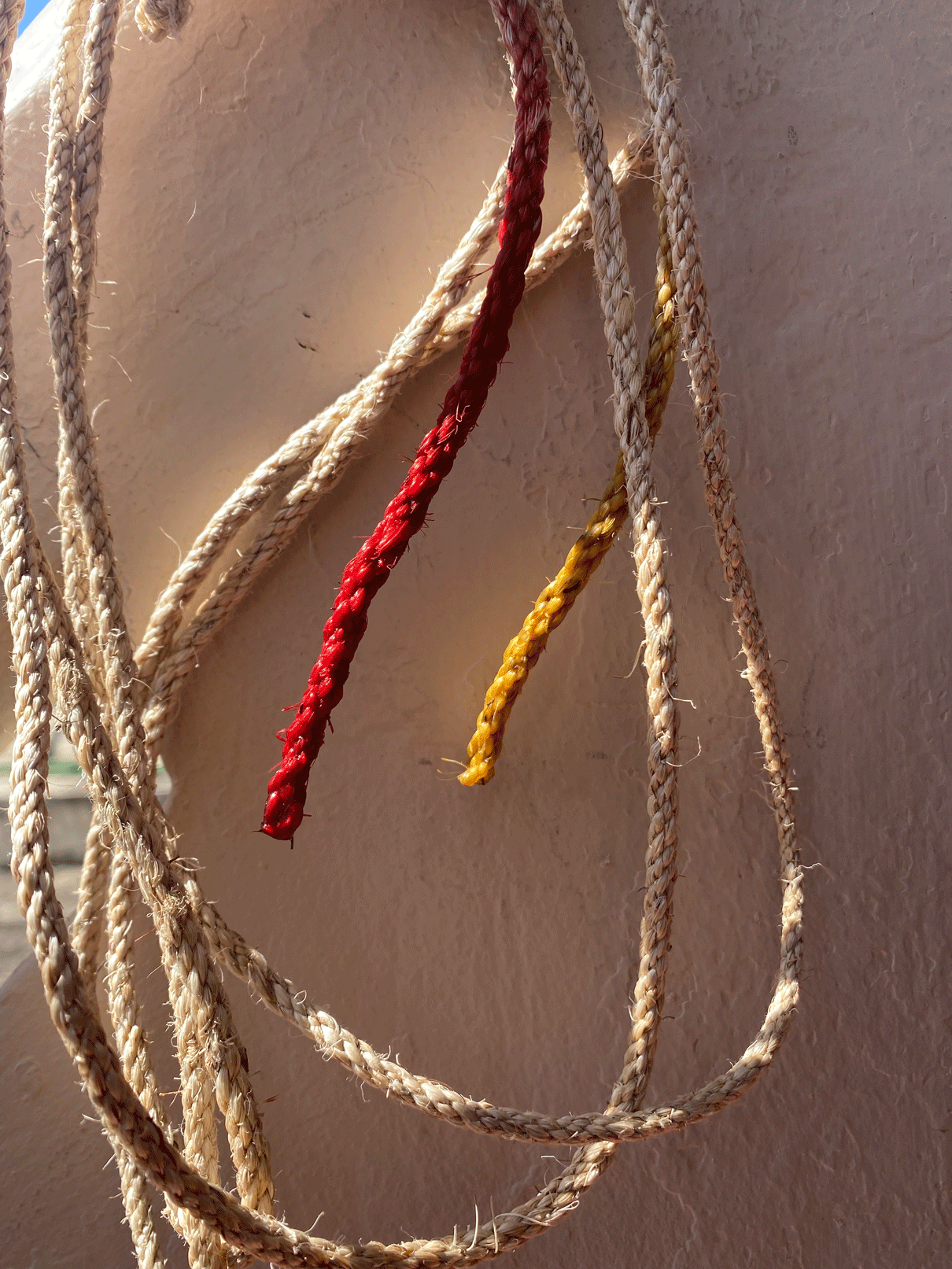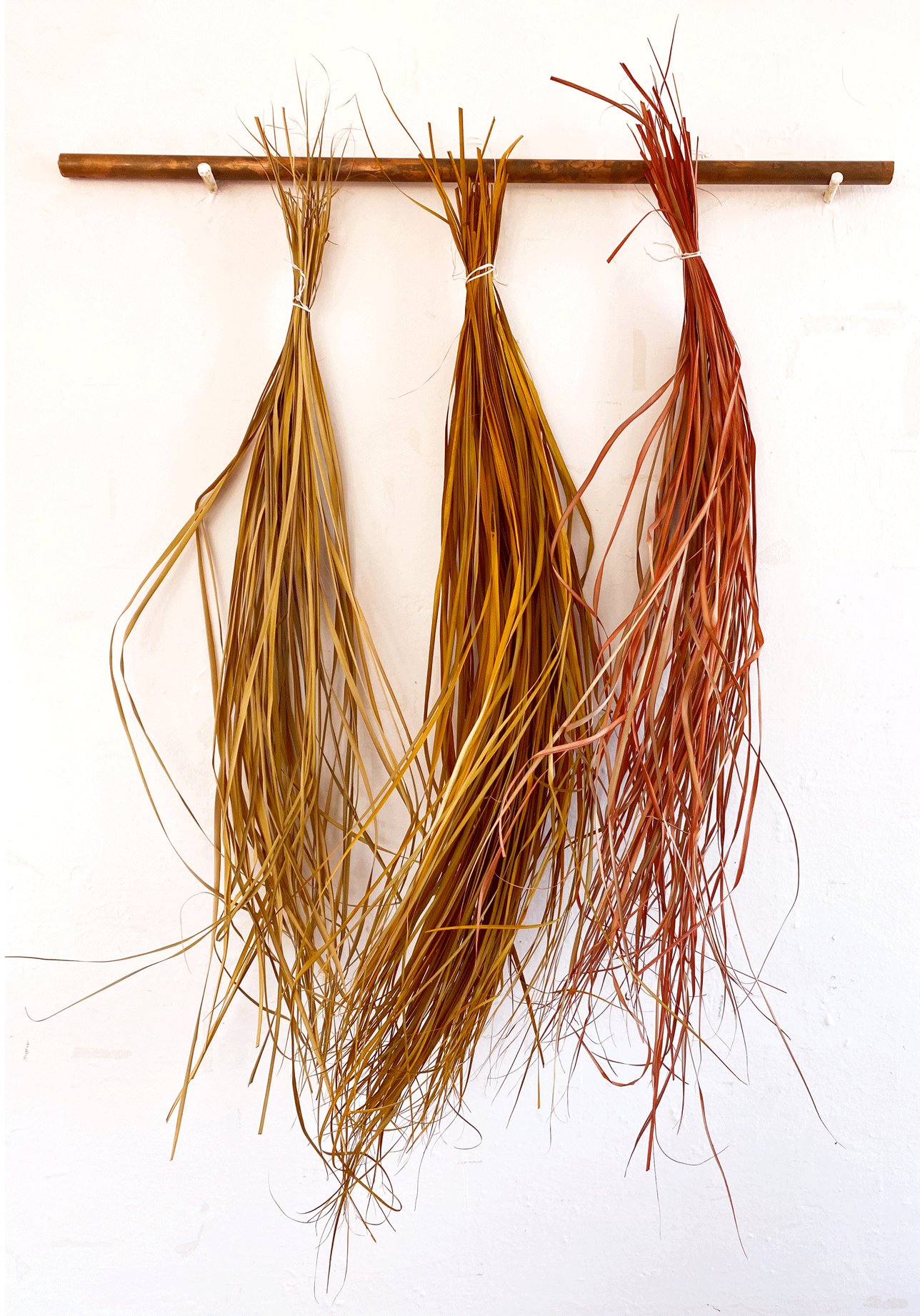DYEING
En Oaxaca estaba haciendo diferentes experimentos con plantas mexicanas, frutas, cortezas y muchas más. En esta foto hay hilos y textiles teñidos con el Zapote negro y el Aguacate.
In Oaxaca I was doing different experiments with Mexican plants, fruits, barks and many more. In this picture are yarns and textiles dyed with the Zapote negro and Avocado.
The technique of dyeing needs a lot of patience, joy of experimentation and pleasure!
El zapote negro o tzapotl en náhuatl es una fruta originaria de México y Guatemala. La piel del zapote pinta un verde suave a las fibras. Y la pulpa, mezclada con zumo de naranja, tiene un sabor delicioso.
Zapote negro or Tzapotl in Nahuatl is a fruit native to Mexico and Guatemala. The skin of the Zapote gives a soft green colour to the fibres. And the pulp, mixed with orange juice, tastes delicious!
Recogí en los restaurantes y entre los amigos diversos residuos vegetales que no son para el consumo como alimento.
I collected various plant waste in restaurants and from friends, which are not suitable for consumption.
En busca de maestras y maestros tintoreros, conocí a varios artesanas y artesanos. En el pueblo de Teotitlán del Valle, el teñido con tintes naturales tiene una larga tradición. Con ARTE SEDA, no sólo se desarrollaba un emocionante intercambio, sino también una amistad.
In search of dye-masters, I got to know various craftswomen and craftsmen. In the village of Teotitlán del Valle, dyeing with natural dyes is a long tradition. With ARTE SEDA, not only an exciting exchange develops, but also a friendship.
IXTLE es uno de los nombres de una fibra de Agave producida en diferentes partes de México. En México existe un gran número de plantas de agave y, por tanto, una gran cantidad de fibras de agave diferentes. La textura y el color de las fibras cambian según el tipo. La fibra de celulosa se puede teñir con colores naturales.
IXTLE is the one of the names for an Agave fibre produced in different parts of Mexico. In Mexico exist a big number of different agave plants and therefore a lot of different agave fibers. The texture and colour of the fibers change depending on the type. The cellulose fibre is possible to dye with natural colours.

